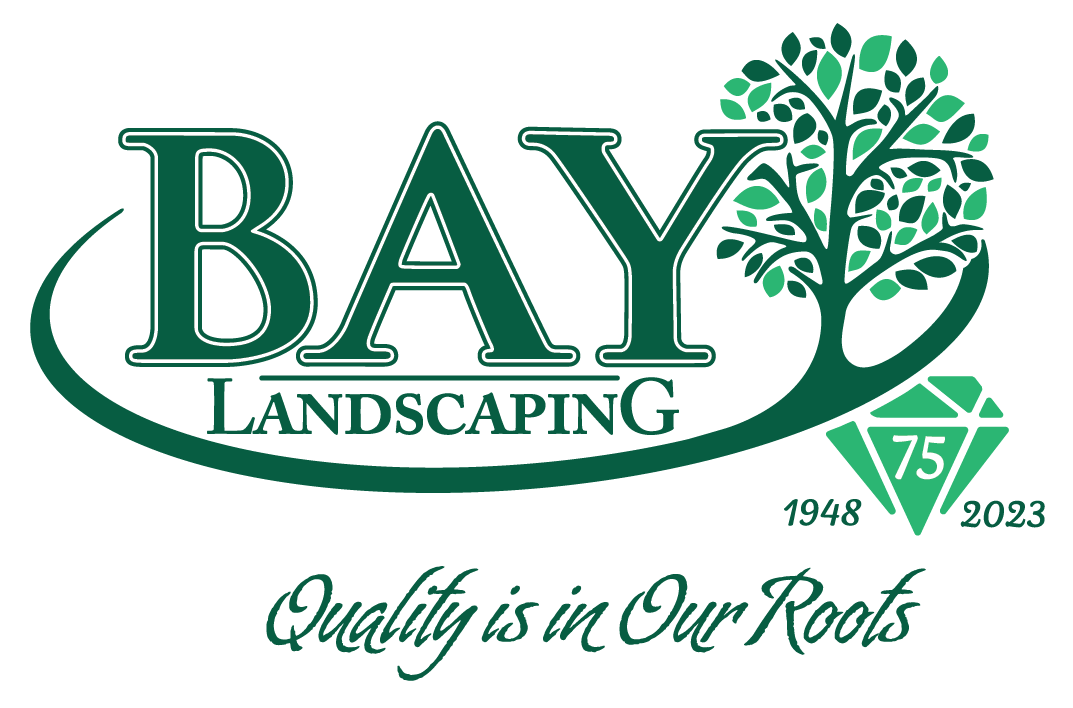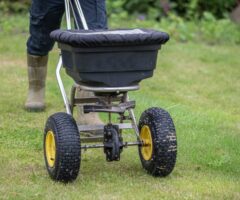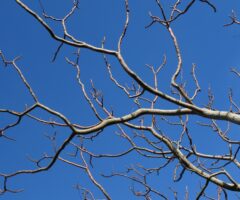Nothing says summer in Michigan quite like bright, cheerful annual plants in your yard or garden. Whether you choose to plant them in a container, add them to a planting bed, or create a floral masterpiece in an AquaPot, annuals bring color, fragrance, and life to your property.
But with the sheer variety of annuals available, how do you choose the best annual plants for your yard?
We know it can get overwhelming! That’s why the experts at Bay Landscaping’s nursery are happy to recommend which annuals will work best for your landscape. And if you plan to plant in a container or AquaPot, they can help with that too!
Many annuals can be planted in any environment that meets their needs, whether that’s in a pot or in the ground. But in this article, we’ll go over what we think are the best annuals for landscape use in the Mid-Michigan region.
The Seasonality of Annuals
Annuals are plants that complete their lifecycle, from seed to death, in one growing season. Unlike perennials, they don’t return year after year. But, for many people their transient nature is one of the reasons they’re so special.
Annuals tend to release a lot of blooms, especially if you deadhead the plants when needed. (You can read some other tips for annuals and other summer plants in our summer landscape tips article).
Whether using annuals in the ground, a raised planting bed, or a container, annuals give you the freedom to switch things up each year or even each season!
See some of our fall container ideas here.
Landscape Uses for Annuals
It’s not easy to move perennials, flowering shrubs, or trees that develop large root systems. But you can mix up which annuals you plant and where you plant them each year!
With annuals, you have the freedom to plant what you want where you want. But there are some basic landscape design elements that will help give your property a polished look.
Annuals, just like any other plant, can be picky about where they are planted. Some require full sun, others part shade. Some may need to be watered more frequently than others. Most will benefit from deadheading any spent flowers, but a few varieties do well even without that type of ongoing care.
Keep in mind what area of your landscape will best suit the annuals that you purchase.
Here are some perennials that will compliment with your annuals.
Best Annuals for Mass Coverings
Annuals grown in containers have limited space to grow, but landscape plants can spread out. That’s why one of the main uses for annuals in your Michigan yard is “mass coverings,” or plants that will grow over a wide area. Below are some of our recommendations for mass covering annuals to use in your landscape.
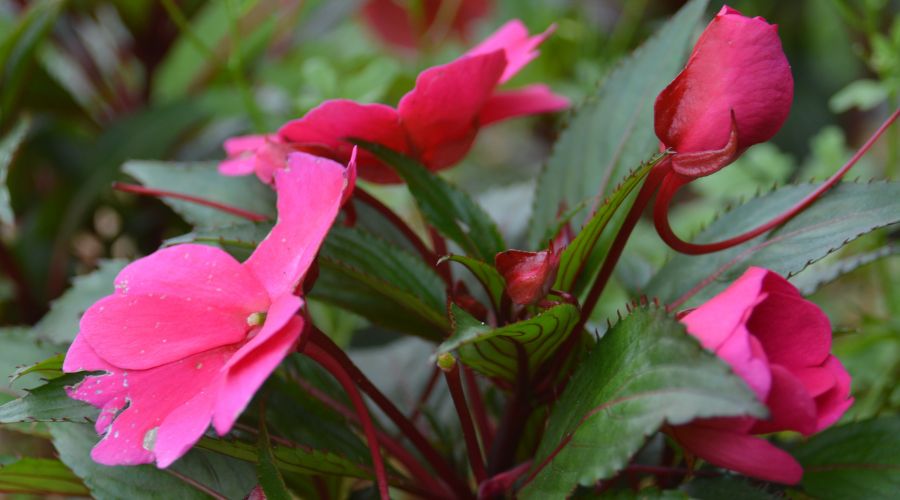
SunPatiens (Impatiens x hybrida SunPatiens®)
Vigorous SunPatiens work best as a mass covering, as they are fast growing and can spread 24 to 30 inches. They can also reach heights of 24 to 48 inches. SunPatiens prefer full sun or partial shade, are available in a variety of colors (red, pink, orange, purple, and white), and continuously bloom from spring through fall.
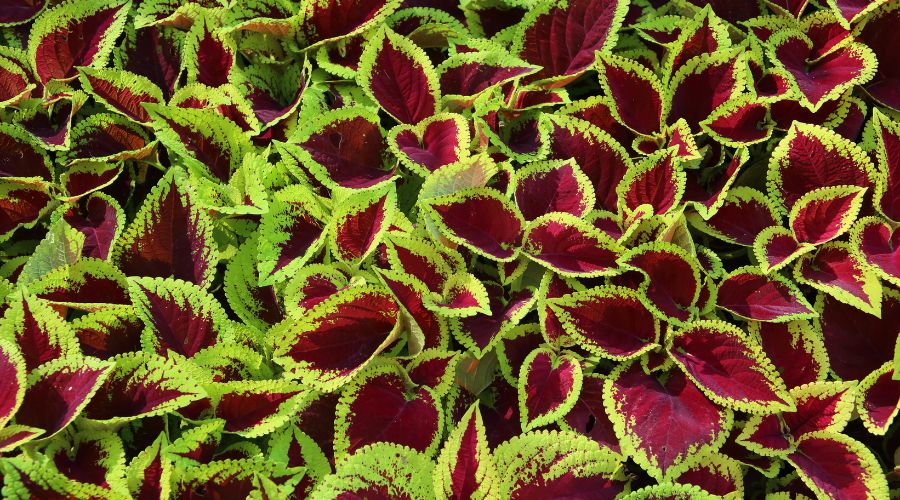
Coleus (Plectranthus scutellarioides)
Coleus is known for its colorful foliage, with colors ranging from lime to burgundy to orange. Unlike flowering plants, coleus does best in the shade (full or partial), though they do produce blue flowers in late summer (some people prefer to prune these off for a neater appearance). It can grow 6 to 36 inches tall and wide, depending on the variety (so pick carefully!). Coleus is a perennial in warmer climates but will die off here in Michigan once the first frost arrives in fall.
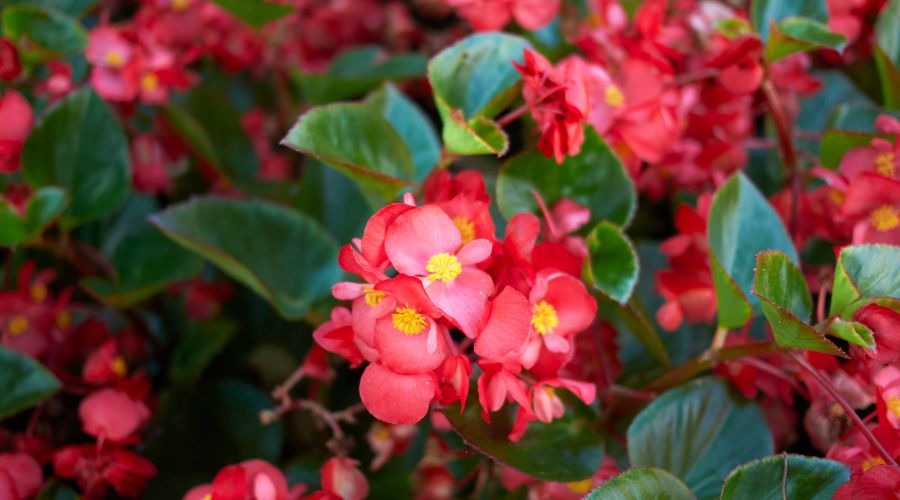
Surefire Begonias (Begonia benariensis Surefire Series)
Surefire begonias are one of the annuals that don’t have to be deadheaded and will produce blooms all season long. They do well in either sun or shade and can spread 18 to 24 inches. They come in both a red and a rose variety, and the flowers are offset by glossy dark green leaves.
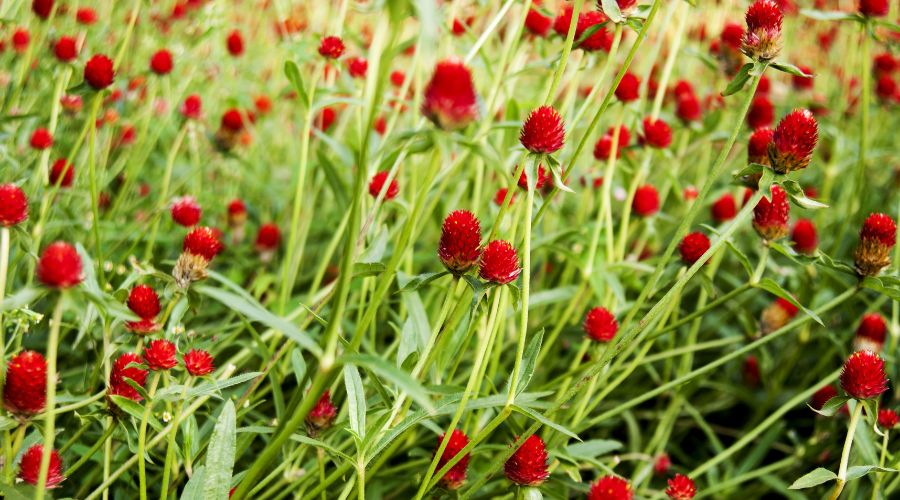
Gomphrena (Gomphrena globosa)
Gomphrena, known also as globe amaranth, looks much like clover. It is not only a popular landscape annual but does well as a dried flower. Butterflies are drawn to this plant so you may attract some to your yard. Gomphrena also works well as a border plant. Some gardeners become discouraged when this plant doesn’t bloom well right away, but gomphrena thrives during the hottest days of summer. If yours hasn’t done well yet, you might just have to wait.
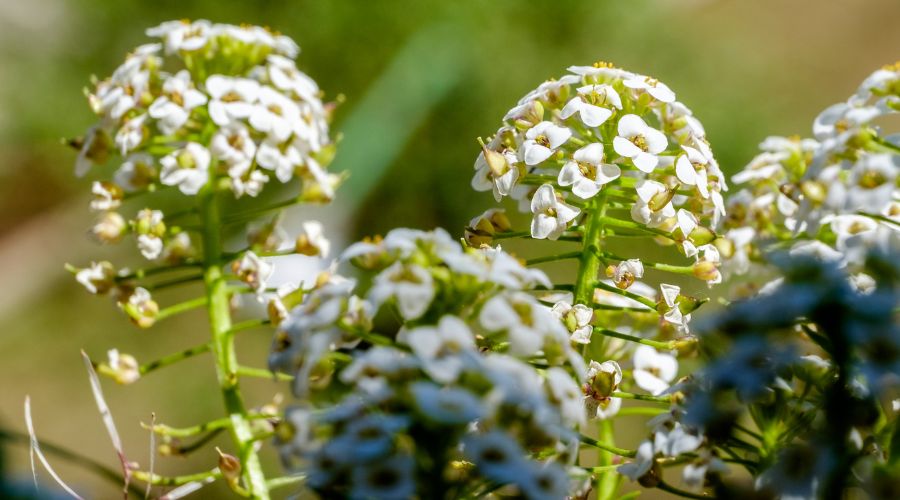
Sweet Alyssum (Lobularia maritima)
This groundcover not only has beautiful flowers, but it also has a honey-like fragrance that many enjoy. It grows into a mound shape, up to 12 inches tall and 10 to 18 inches wide. It blooms from spring through fall and prefers full sun. You can find sweet alyssum in a variety of colors, including white, purple, pink, and red.

Nemesia (Nemesia spp.)
Blooming in spring and summer, there are over 50 types of nemesias being grown today. This plant prefers full or partial sun, and, depending on the variety, can grow 8 to 24 inches tall. This is another annual plant that is available in a variety of colors, and even some bicolors (multiple colors on the same plant).
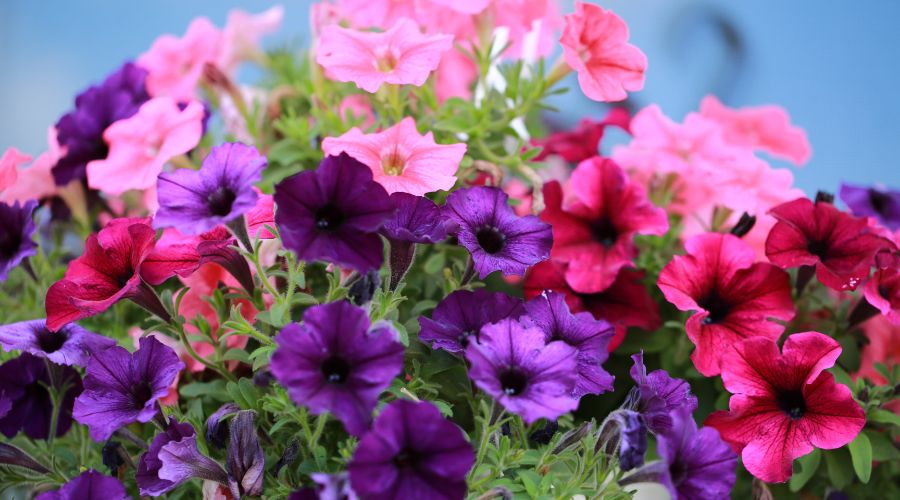
Petunia (Petunia spp.)
One of the most popular garden annuals, petunias bloom primarily in summer. They prefer full sun but may need some protection (such as shade cloth) during the hottest summer days. This plant does benefit from deadheading, so take off any spent flower heads when you check on them. You can also pinch back the stems to encourage more flowers. Petunias are available in almost every color, as well as striped and spotted patterns, so you’re sure to find one that suits your needs.

Verbena
Several types of verbena are commonly available as annuals in our climate, such as purpletop verbena (V. bonariensis), garden verbena (V. x hybrida), and tuberous verbena (V. rigida). Most do best in full sun and are known for their star-shaped flowers that grow in clusters. Verbena plants can grow 6 to 12 inches tall and 12 to 20 inches wide, depending on the type. You can find them in colors ranging from purple, red, white, and pink, and they bloom continually all season long.
Best Annuals to Use as Statement Pieces
While mass coverings can be useful for a large area, sometimes you want a plant that will really stand out and become a focal point. These statement pieces can thrive on their own in a landscape or can be planted near mass coverings.

Colocasia
Commonly known as elephant’s ear, this statement plant is known for its giant heart-shaped leaves. Colocasia can be grown in part shade or full sun but prefers moist soil as it is a tropical plant. Its tall height and large leaves can bring shade to parts of your yard. While it is an ingredient used in some cooking, any part of the plant eaten raw are poisonous, so keep that in mind if you have pets that are likely to chew on things. We like to pair colocasia with dragonwing and pegasus begonias.
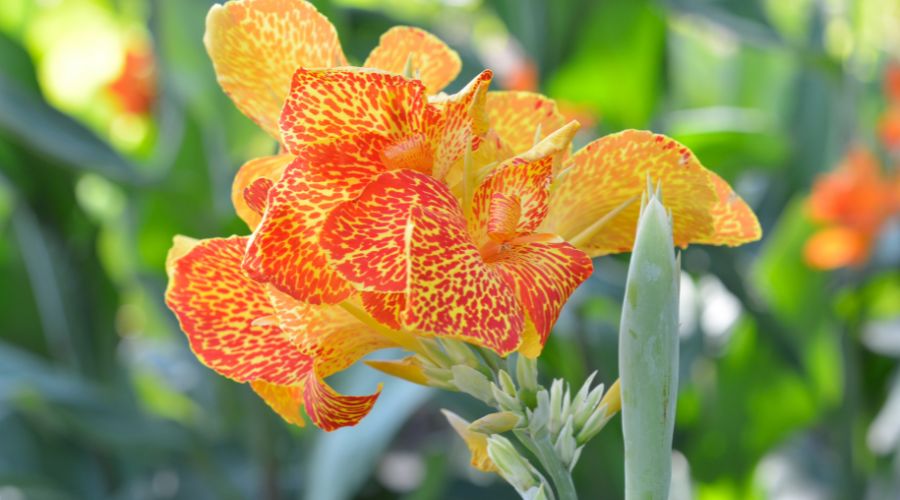
Canna
Cannas, also called canna lilies, are another statement plant that can add a tropical feel to your yard. They are known for their bright flowers on tall stalks but are sometimes planted just for their colorful foliage, which often has interesting patterns. Due to their tropical nature, they need consistent moisture and may benefit from compost or other organic fertilizer if planted in the ground. They will do best in full sun but some types can tolerate some shade as well.
Not sure what to plant? We can help!
If you are overwhelmed by the multitude of choices available when it comes to planting annuals in your Mid-Michigan landscape, just call the professionals at Bay Landscaping at 989-893-0000!
One of our nursery employees can help you choose the best annual plant options when you visit our nursery. We’re conveniently located in Essexville, Michigan, just a short drive away from Midland, Saginaw, and Bay City.
Or, if you want a professionally designed landscape, contact us to learn more about our landscape design services.
